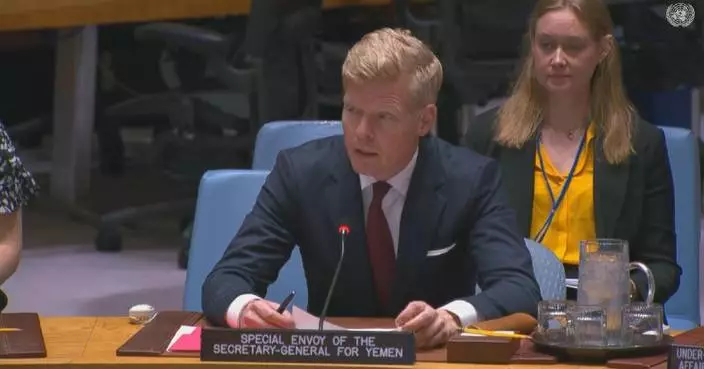China has seen three of its cherished sites included among the new additions made to the United Nations Educational, Scientific and Cultural Organization (UNESCO) World Heritage List, which honors locations deemed to be of significant cultural, historical, or scientific value.
The Chinese sites were among 24 added during the 46th session of the UNESCO World Heritage Committee in New Delhi, India, bringing the overall total to 1,223 inscribed properties.
The majority of these have been included in the cultural category in recognition of their integrity, authenticity, protection and management status. Among them is the Beijing Central Axis, an area located right in the heart of the Chinese capital which includes a host of historical sites including the renowned Forbidden City.
"The cultural sites are really a treasure for humanity. People from all around the world, they have so much in common when we talk about culture and when we value about culture," said Yang Xinyu, China's Ambassador to UNESCO, in a interview on the sidelines of the New Delhi session.
Also at this session, China's "Badain Jaran Desert - Towers of Sand and Lakes" and "Migratory Bird Sanctuaries along the Coast of Yellow Sea-Bohai Gulf of China (Phase II) were reviewed and approved by the World Heritage Committee, also successfully entering the World Heritage List.
Located in the hyper-arid region of northwestern China, the Badain Jaran Desert is the country's third largest desert. Its notable features include the world's tallest, stabilized sand mega-dune, which reaches a relative height of 460 meters, the highest concentration of inter-dunal lakes, and the largest expanse of so-called singing sands and wind-eroded landforms.
The Migratory Bird Sanctuaries along the Coast of the Yellow Sea-Bohai Gulf of China (Phase II) is a serial extension of the property of the same name that is already listed on the World Heritage List. The newly-admitted five sites are part of Phase II, while Phase I sanctuaries were inscribed on the World Heritage List in 2019.
Tim Badman, director of the World Heritage Programme under the IUCN, hailed the sheer diversity of sites chosen, and also noted the inclusion of 'phrase II' of the Migratory Bird Sanctuaries along the Coast of the Yellow Sea-Bohai Gulf of China, an extension of a site which had previously been inscribed on the World Heritage List back in 2019.
"We have sites that have been listed for their geological values, sites listed for their cave biodiversity -- the incredible animals that live isolated from the outside world. And we have a very important site that's been listed in China, which recognizes a series of migratory sites for the birds that pass across many countries," said Badman.
The World Heritage Committee also considered properties in the endangered category and added the Saint Hilarion Monastery in the war-torn Gaza Strip, which is deemed one of the oldest sites in the Middle East.
"For us, it's a hope for people, because our people are suffering so much. And the inscription of this site came under an emergency basis, and it is inscribed on the World Heritage List [as a site] in danger," said Ahmad Rjoob, general director of the World Heritage Directorate.
The 46th session of the UNESCO World Heritage Committee took place from July 21 to 31 in the Indian capital.

Chinese sites included among diverse new inscriptions on UNESCO World Heritage List





















































